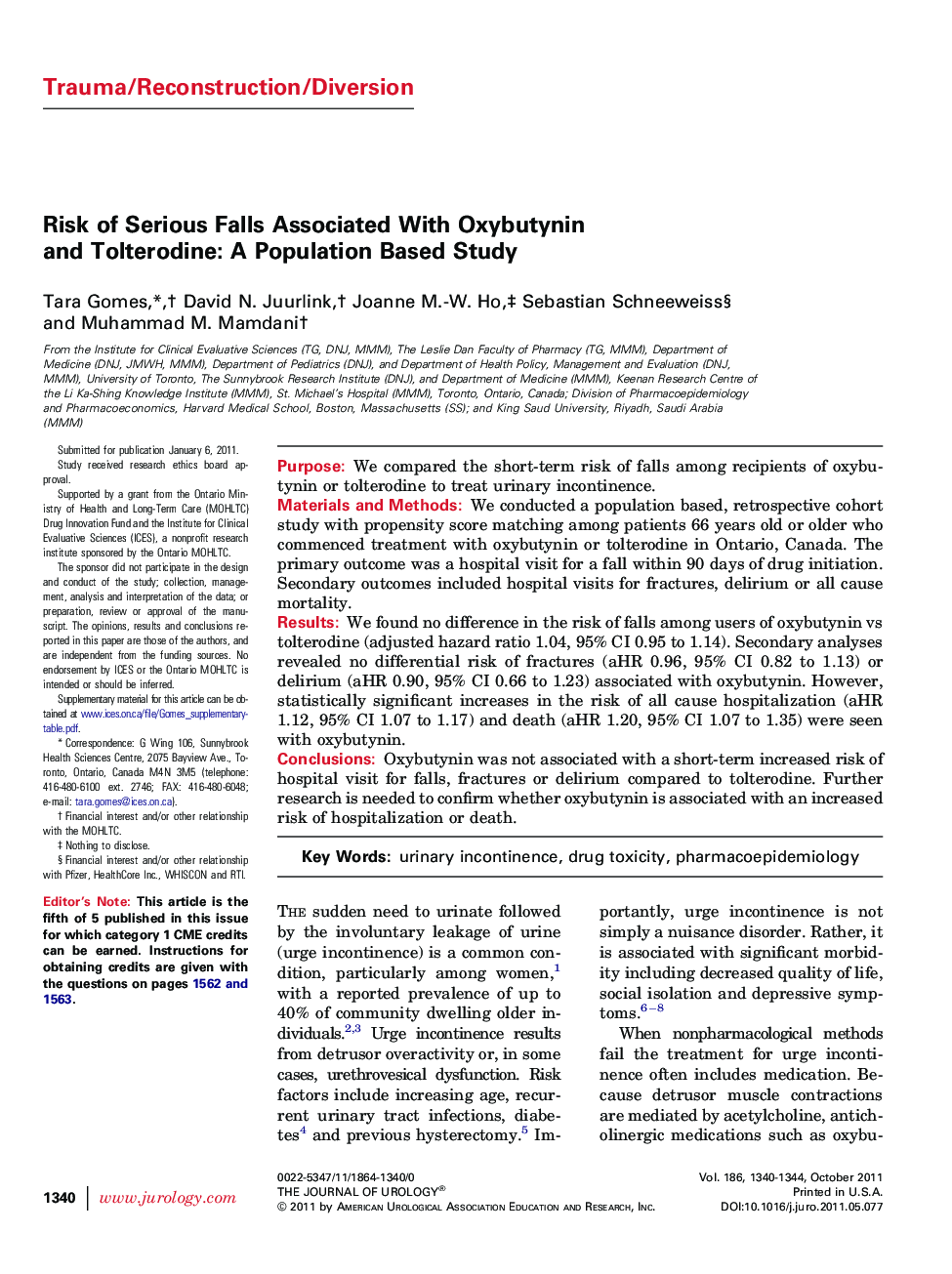| Article ID | Journal | Published Year | Pages | File Type |
|---|---|---|---|---|
| 3868491 | The Journal of Urology | 2011 | 5 Pages |
PurposeWe compared the short-term risk of falls among recipients of oxybutynin or tolterodine to treat urinary incontinence.Materials and MethodsWe conducted a population based, retrospective cohort study with propensity score matching among patients 66 years old or older who commenced treatment with oxybutynin or tolterodine in Ontario, Canada. The primary outcome was a hospital visit for a fall within 90 days of drug initiation. Secondary outcomes included hospital visits for fractures, delirium or all cause mortality.ResultsWe found no difference in the risk of falls among users of oxybutynin vs tolterodine (adjusted hazard ratio 1.04, 95% CI 0.95 to 1.14). Secondary analyses revealed no differential risk of fractures (aHR 0.96, 95% CI 0.82 to 1.13) or delirium (aHR 0.90, 95% CI 0.66 to 1.23) associated with oxybutynin. However, statistically significant increases in the risk of all cause hospitalization (aHR 1.12, 95% CI 1.07 to 1.17) and death (aHR 1.20, 95% CI 1.07 to 1.35) were seen with oxybutynin.ConclusionsOxybutynin was not associated with a short-term increased risk of hospital visit for falls, fractures or delirium compared to tolterodine. Further research is needed to confirm whether oxybutynin is associated with an increased risk of hospitalization or death.
